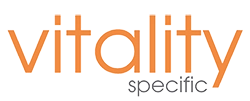Use of Kinetic and Static EMG in Ballard Seattle WA Chiropractic, Interview with David Marcarian

David Marcarian is the president of MyoVision, a wireless physiological monitoring system that allows Ballard Seattle WA chiropractors to measure the effectiveness of treatment over time with quantitative, objective data. In the event of a car accident resulting in whiplash injuries, this technology may be your best defense. We took some time to chat with David about MyoVision, how it works and why the technology is credible.
What is MyoVision in Ballard Seattle WA, and where did the technology come from?
I was with NASA from 1983 to 1986, and I was evaluating hand controllers that were going to be integrated into the helicopter cockpit. We were comparing different hand controllers, and one of the things we were looking at was whether one of these hand controllers was creating more muscle fatigue than the other. I put together my own million-dollar lab at NASA and I completed a master's thesis on evaluating hand controllers using this technology called Surface Electromyography. Very simply, the device measures muscle tension, in the same manner as an EKG. I wrote a grant proposal to the National Institutes of Health to develop the MyoVision device. There really was no place for it with chiropractors at the time, but we found out that when people have neuromuscular injuries or spinal subluxations, the device is able to detect the muscle firing which occurs to compensate for the injury. For example, in a whiplash, the device can establish whether injuries are real or not, and how severe they are by evaluating the muscle firing patterns and amount of "spasm" or hypertonicity.
What does the MyoVision device look like, and what does it measure?
There are two devices. The static EMG is a handheld device that is more of a screening tool. It gives you a quick reading of the muscles around the spine. It provides a graphic image of the back, showing levels of muscle tension as bars extend from the center of the spine outward. You can see how much muscle tension there is and the pattern of muscular bracing and guarding. The new patented 3G Wirefree device performs the test in only takes thirty seconds due to its unique design which allows it to take two measurements at a time instead of one.
The second tool, which is called the dynamic EMG or DynaROM, simultaneously measures the range of motion along with surface EMG and graphs them over time. It allows you to document not just how far the patient is able to bend, but if muscles guard and brace in response to a limited range of motion, it allows you to document the presence or absence of injury. It is more of a functional test as the patient performs all the ranges of motion during the test. DynROM sEMG is a wonderful add-on to Static sEMG because some individuals are used to the pain they are in while standing still (the position the Static sEMG is measured in), but when we move the patient, we then elicit abnormal muscle firing patterns which don't always appear in the static test. It is a definite requirement when documenting any type of personal injury or workers' compensation case.
The current MyoVision is called the 3G Wirefree System ™, and it's revolutionary not only because it measures how far you can bend and muscle guard simultaneously, but does so in a wireless fashion with a range of up to 50 feet. This range allows you to walk out to potential patients at screening and not have to convince them to come to you to be tested, increasing your ability to "connect" with potential patients without them experiencing the fear of commitment that comes with having them come up to your booth.
What is it like to have the MyoVision technology used on the body?
There are no sensations at all when MyoVision is used as it simply measures and does not stimulate at all. It is so safe it can be used on pregnant women and children and is completely painless.
How can Dynamic or Kinetic sEMG be used if a person is in a car accident?
The state of Florida stated that there was no validity to this tool for evaluating injury in car accidents, so I filed suit against the state of Florida. Three hundred insurance companies joined the state of Florida, making it a true "David vs. Goliath" case. It was myself and another chiropractor against all of them. By showing the scientific literature in the courtroom, we were able to establish that the technology is valid for evaluating injury from auto accidents. The case went all the way to the supreme court of Florida and was upheld.
Why does it work? It is the body's natural defense mechanism to respond to subluxations and/or soft tissue injury by bracing and guarding to immobilize the region of injury. Research studies have shown clearly that when someone has an injury from whiplash, for example, their muscles not only fire to brace and guard but fire with significant irritability. When you have that sudden acceleration and deceleration that occurs in whiplash, you damage the ligaments. The muscles have to then take over and do the job the ligaments are supposed to do and keep the spine in place. What happens in whiplash, then, is that the muscles have to tense in an extreme fashion to compensate for the instability created by the ligamentous damage caused by whiplash.
The unintentional response to injury is to tense those muscles. What is different is that we're measuring this and documenting it accurately, objectively, and very quickly. That's what makes MyoVision unique. We're able to show jury data in a visual form using graphics establishing that, yes, indeed, when a person goes to move her head, her muscles fire in an abnormal fashion.
The reason I've never lost a case in 23 years is that I provide objective, graphical data while the opposition provides opinions. Objective data wins over opinion ninety-nine percent of the time.
How long after a car accident should the MyoVision technology be used?
If an injury is not treated properly, we can still see it two to five years later, but, in general, it's optimal to use it in the first four to six weeks. This tool can then be used to see how well the treatment plan is going, so you might do another test six or eight weeks after that to track progress and either continue or alter the treatment plan if needed.
Do most chiropractors have MyoVision?
It's something that most upper cervical practitioners have not quite adopted unless they do personal injury work. It is now recognized as a standard tool for evaluating injury by the American Medical Association, the American Chiropractic Association's Fitness and Rehabilitation group, and the International Chiropractic Association so more people are beginning to accept it. Chiropractors who use MyoVision are always amazed at how patients respond, as the toughest job as a chiropractor is "selling the invisible," or what is going on inside the body. MyoVision does this job for them so they can focus on adjusting and not convincing patients to stay with them for care.
OFFICE HOURS
Monday
8:30am - 11:00am
2:00pm - 4:30pm
Tuesday
2:00pm - 5:30pm
Wednesday
8:30am - 11:00am
2:00pm - 5:00pm
Thursday
Closed
Friday
9:00am - 11:00am
Saturday
9:00am - 10:00am
Sunday
Closed
Vitality Specific Chiropractic
5211 20th Ave NW C
Seattle, WA 98107



